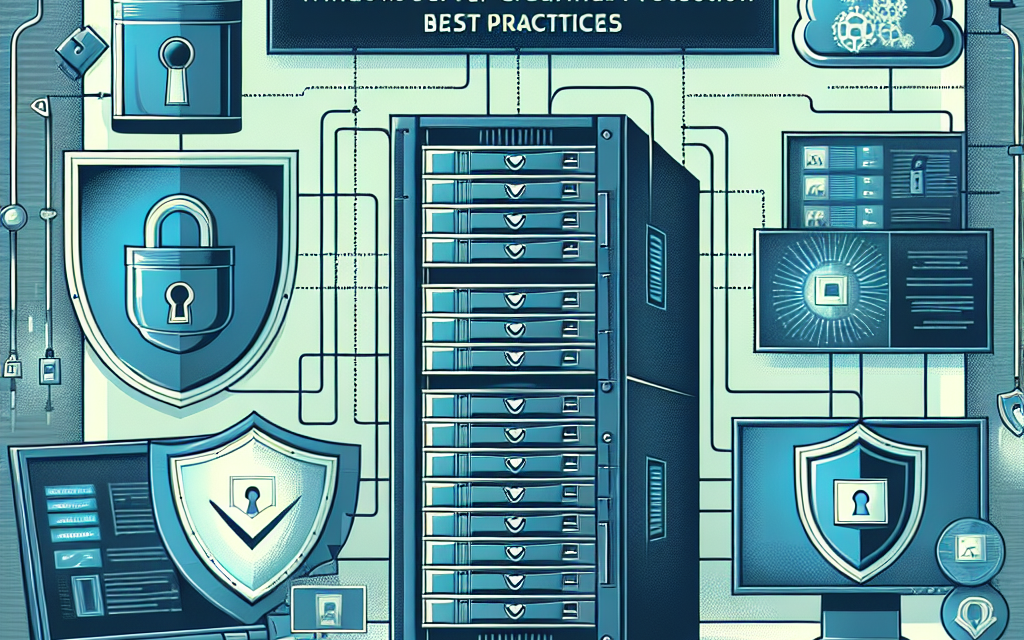Introduction
In today’s digital landscape, the protection of credentials has become paramount. With an increasing number of cyber threats targeting organizations of all sizes, safeguarding sensitive information such as usernames and passwords is critical. Windows Server is widely utilized in enterprise environments, making it a prime target for malicious actors. In this article, we will discuss best practices for enhancing Windows Server credential protection, ensuring that your organization remains secure against unauthorized access.
Understanding Credential Vulnerabilities
Before diving into best practices, it’s essential to understand common vulnerabilities that can compromise credentials:
- Weak Password Policies: Many breaches occur due to passwords that are easily guessable or reused across multiple platforms.
- Lack of Multi-Factor Authentication: Relying solely on passwords increases the risk of unauthorized access.
- Insecure Storage: Storing credentials improperly can lead to exposure, especially if an attacker gains access to server files.
- Insufficient Monitoring and Auditing: Without proper oversight, it can be difficult to detect and respond to credential misuse or breaches.
Best Practices for Credential Protection
1. Enforce Strong Password Policies
Establish and enforce a strong password policy to ensure that all user accounts utilize complex, unique passwords. Utilize the following guidelines:
- Minimum Length: Require passwords to be at least 12-16 characters long.
- Complexity Requirements: Mandate the inclusion of uppercase and lowercase letters, numbers, and special characters.
- Regular Changes: Implement policies for regular password changes, but balance this with user convenience to foster compliance.
- Account Lockout: Set account lockout thresholds to mitigate brute force attacks.
2. Implement Multi-Factor Authentication (MFA)
Deploying Multi-Factor Authentication is one of the most effective ways to enhance credential security. MFA adds an additional layer of protection by requiring users to provide two or more verification factors. Consider using:
- Hardware Tokens: Devices that generate one-time passcodes.
- Mobile Authentication Apps: Applications such as Google Authenticator or Microsoft Authenticator that generate time-sensitive codes.
- Biometric Verification: Fingerprint or facial recognition technologies for an additional layer of security.
3. Utilize Group Policy for Credential Management
Windows Server offers Group Policy Objects (GPOs) that can streamline credential management across multiple servers and workstations. Use GPOs to enforce policies for:
- Password length and complexity.
- Account lockout policies.
- User rights assignment to limit access to sensitive areas.
4. Secure Credential Storage
Properly securing credentials is vital to preventing unauthorized access. Here are some best practices:
- Use Secure Store Solutions: Use services like Windows Data Protection API (DPAPI) to encrypt sensitive data at rest.
- Avoid Hardcoding Credentials: Refrain from hardcoding passwords in scripts or application code. Instead, utilize secure secrets management solutions (e.g., Azure Key Vault, AWS Secrets Manager).
- Limit Credential Access: Set the principle of least privilege to restrict access to credential stores and storage solutions.
5. Regularly Monitor and Audit Access
Continuous monitoring and auditing are essential for identifying suspicious activities related to user credentials:
- Enable Logging: Utilize Windows Event Logging to track login attempts, both successful and failed.
- Audit Failed Logins: Regularly review logs for patterns of failed login attempts, which can indicate potential brute-force attacks.
- User Activity Monitoring: Establish systems to analyze user behavior for anomalies that may suggest compromised credentials.
6. Educate Employees
Human error is often the weakest link in security. Investing in employee education can significantly mitigate risks:
- Security Awareness Training: Regularly conduct training sessions covering topics like phishing, social engineering, and password hygiene.
- Phishing Simulations: Use simulated phishing attacks to build employees’ awareness and ability to recognize threats.
- Encourage Reporting: Foster an environment where employees feel comfortable reporting suspicious activities or potential breaches.
7. Keep Your System Updated
Keep your Windows Server and its applications up to date with the latest security patches and updates:
- Regular Updates: Schedule regular updates for the operating system and installed applications.
- Patch Management Solutions: Consider implementing patch management tools to automate and streamline the update process.
Conclusion
With cyber threats continually evolving, enhancing Windows Server credential protection is crucial to your organization’s security posture. By implementing these best practices, you can significantly reduce the risk of credential compromise and protect sensitive information from malicious actors. Start assessing and applying these strategies today to build a robust framework for credential protection within your Windows Server environment.
References
- Microsoft Documentation on Password Policies
- Best Practices for Using Multi-Factor Authentication
- Windows Group Policy Basics
By following the outlined practices, WafaTech Blogs aim to empower businesses and IT professionals in fortifying their Windows Server environments against credential-related vulnerabilities.





